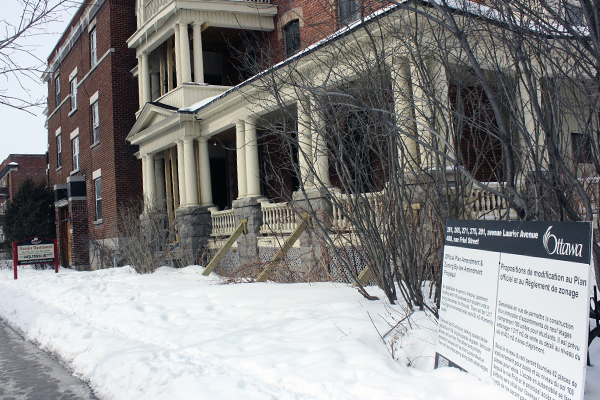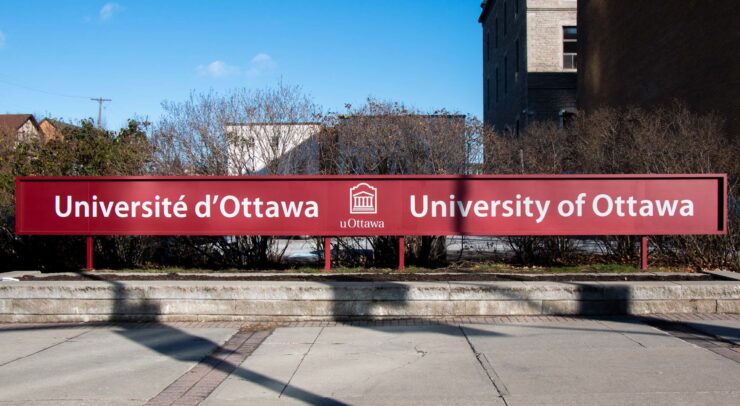Nine-storey building must pass at city council, but neighbours oppose plan
Photo by Tina WallaceSandy Hill residents are worried about the influx of students and the removal of five heritage sites in the neighbourhood now that a proposal for a nine-storey development and future student residence was approved by the city’s planning committee on Feb. 25.
The building, at 261–281 Laurier Ave. East and 400 Friel Street — near a future light rail transit station — would be mixed use, holding student services and retail, but would contain enough rooms for 630 students in studio and two-bedroom apartments.
The university has barely enough on-campus housing for 10 per cent of its 40,000 students. A new residence on Henderson Avenue with space for 165 beds will begin construction in the summer. Kaitlynne-Rae Landry, president of the Residents’ Association of the University of Ottawa (RAUO), said the build is a “step in the right direction.” However, she said it’s not even close to meeting the university’s needs.
“I think it would have been more advantageous and responsible had the University pursued getting the zoning changed so that a higher building with more beds could have been constructed,” she said.
The proposal, first presented last fall, by developer Viner Assets said the building at Laurier Avenue and Friel Street would prevent students from living in converted single-family homes in Sandy Hill. Residents of the area, however, believe the converted houses will still be used and an added 630 students will strain the neighbourhood by increasing noise pollution and litter.
Chad Rollins, a representative for Action Sandy Hill, said in a presentation to the planning committee that the proposed building would “loom over its surroundings,” and “ruining the character” that the existing buildings contribute. He also said more students would “exacerbate the growing imbalance in the diversity of the neighbourhood.”
Sandy Hill resident Anna-Marie Melanson said she is worried about a student “ghetto,” and that adding more students will bring “the moral decay of society and community living” to Sandy Hill. Another resident, Cathy Allison, said the proposal was “all about money,” and is concerned about destroying the heritage site.
“Demolishing five buildings of historical importance is a sacrilege,” she said.
City Councillor Stephen Blais called protests against the proposal “blatant ageism,” and argued that “saying there shouldn’t be student housing because they’re young is an unacceptable justification.” He said public education funds should not be spent on student housing if private companies were capable of paying.
The city planning committee recommended approving the project, saying the proposal preserves and restores one of the existing historical houses on the site. In their report, members wrote that “the proposed development supports the city being a place where all citizens are accommodated in a variety of housing.”
The proposal still needs to pass at city council later this month. City Councillor Mathieu Fleury said he and residents will appeal to the Ontario Municipal Board if it passes. Fleury is against the proposal, because Sandy Hill is a “stable, low-rise community. This is not a low-rise building.”
The City would be obligated to rezone for the new building, as the Sandy Hill Secondary Plan states buildings must be four storeys or shorter. Viner Assets argued the 20-year-old document “does not meet new intensification policies that encourage development near transit.”





